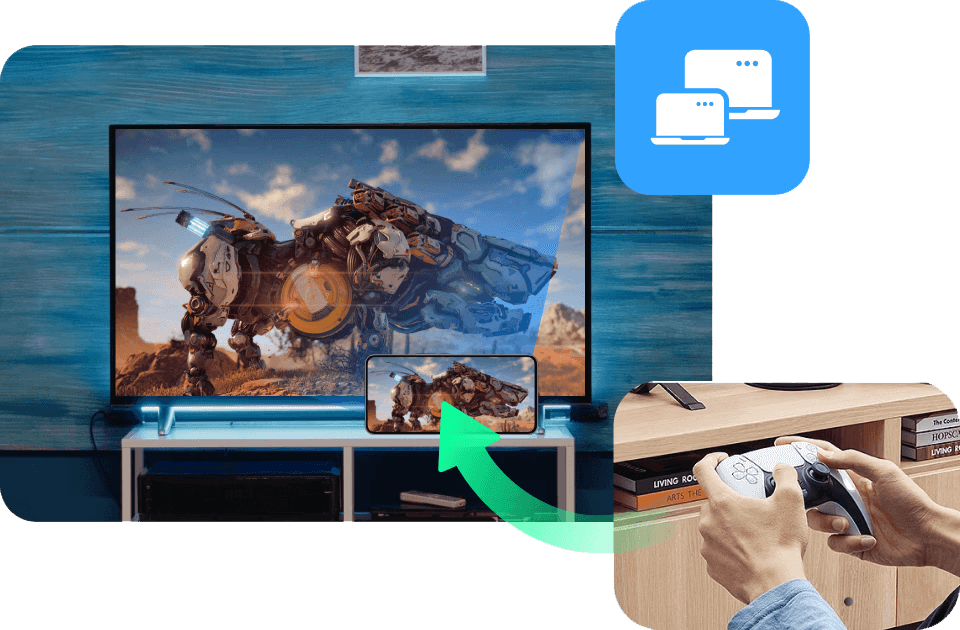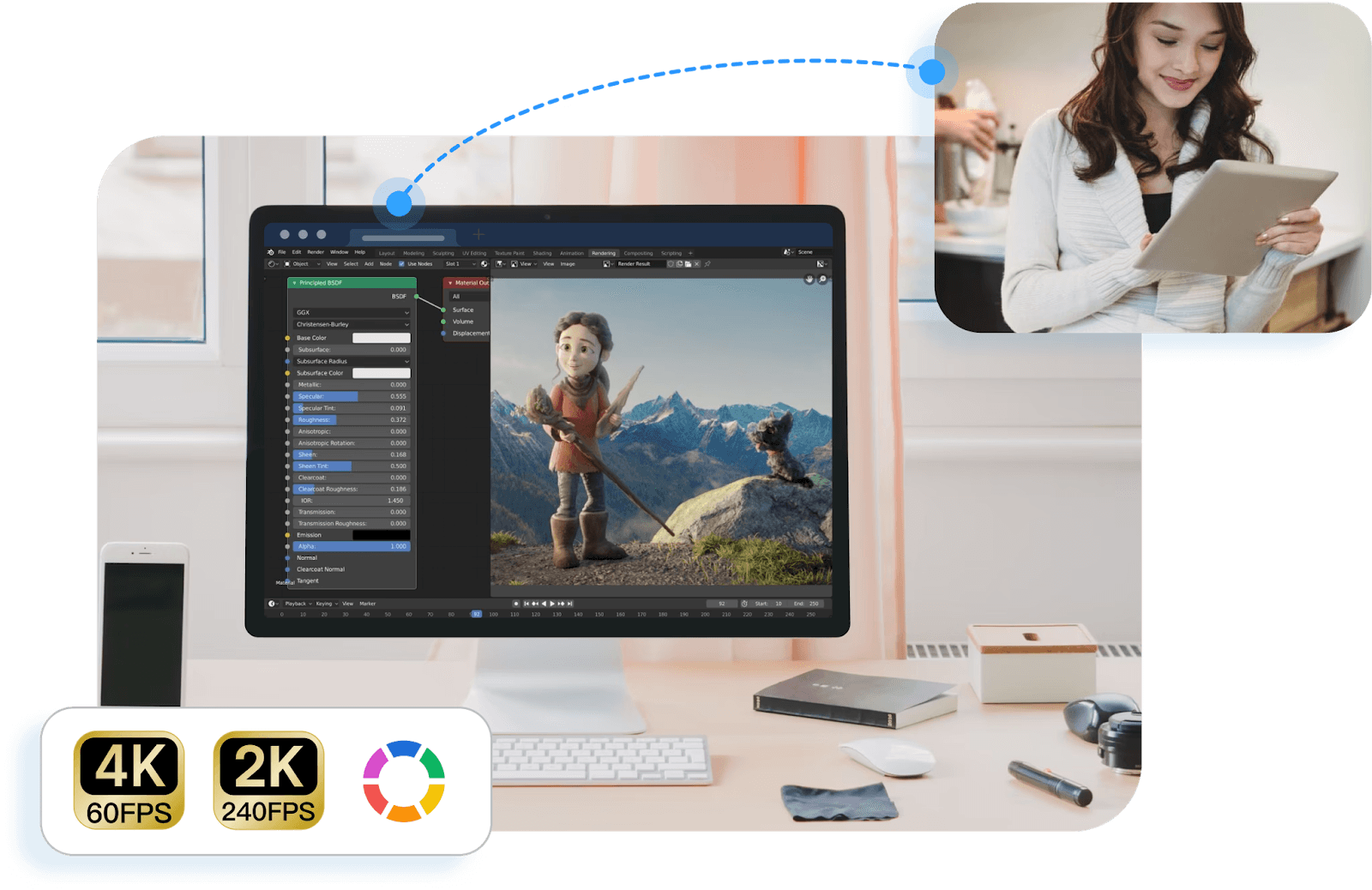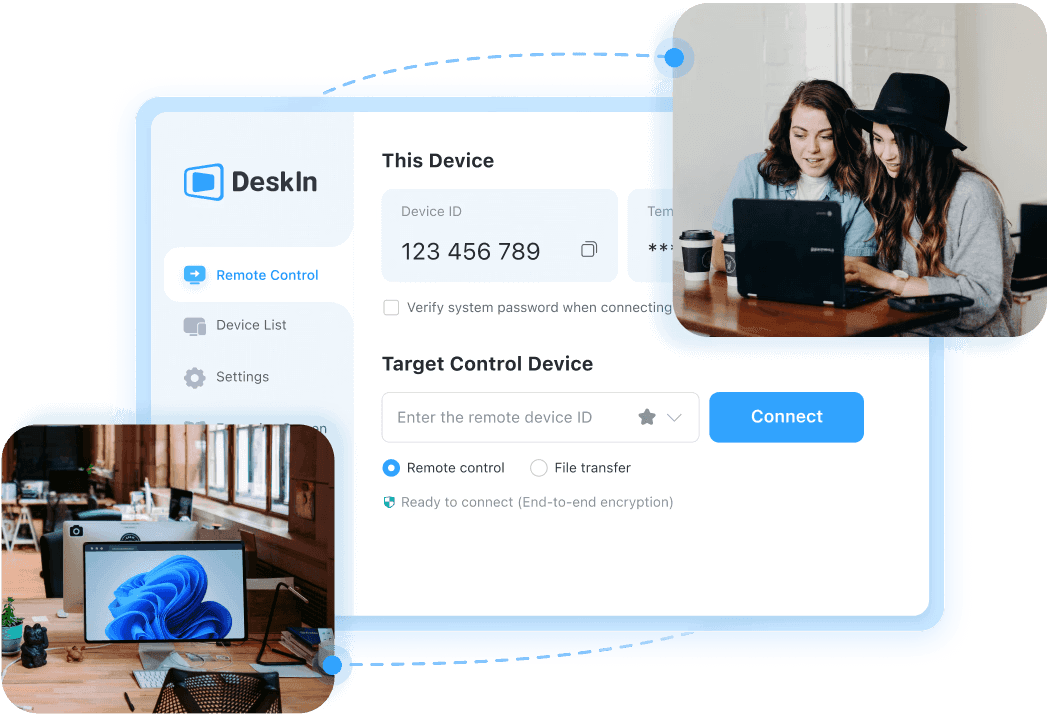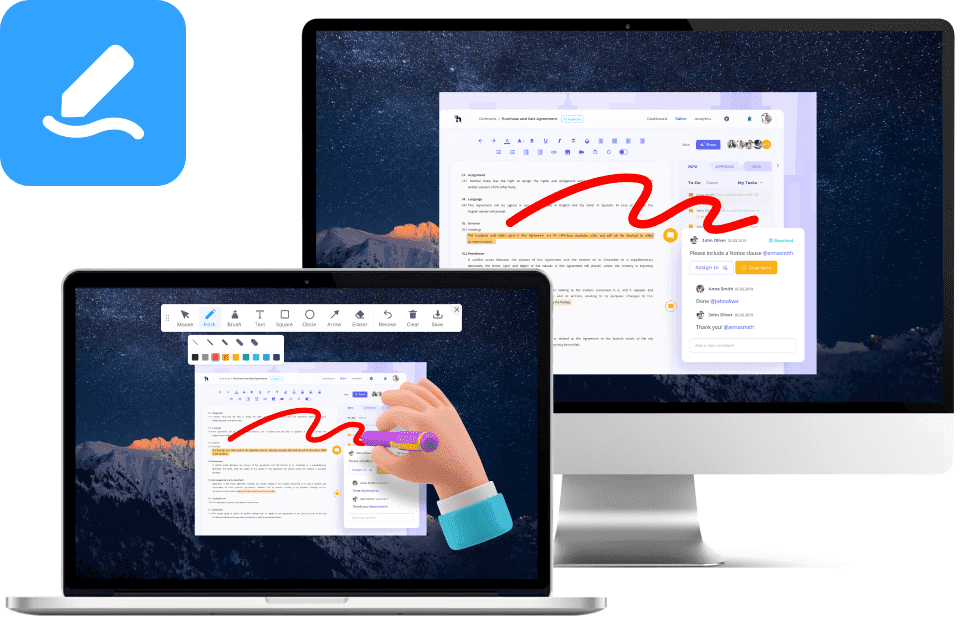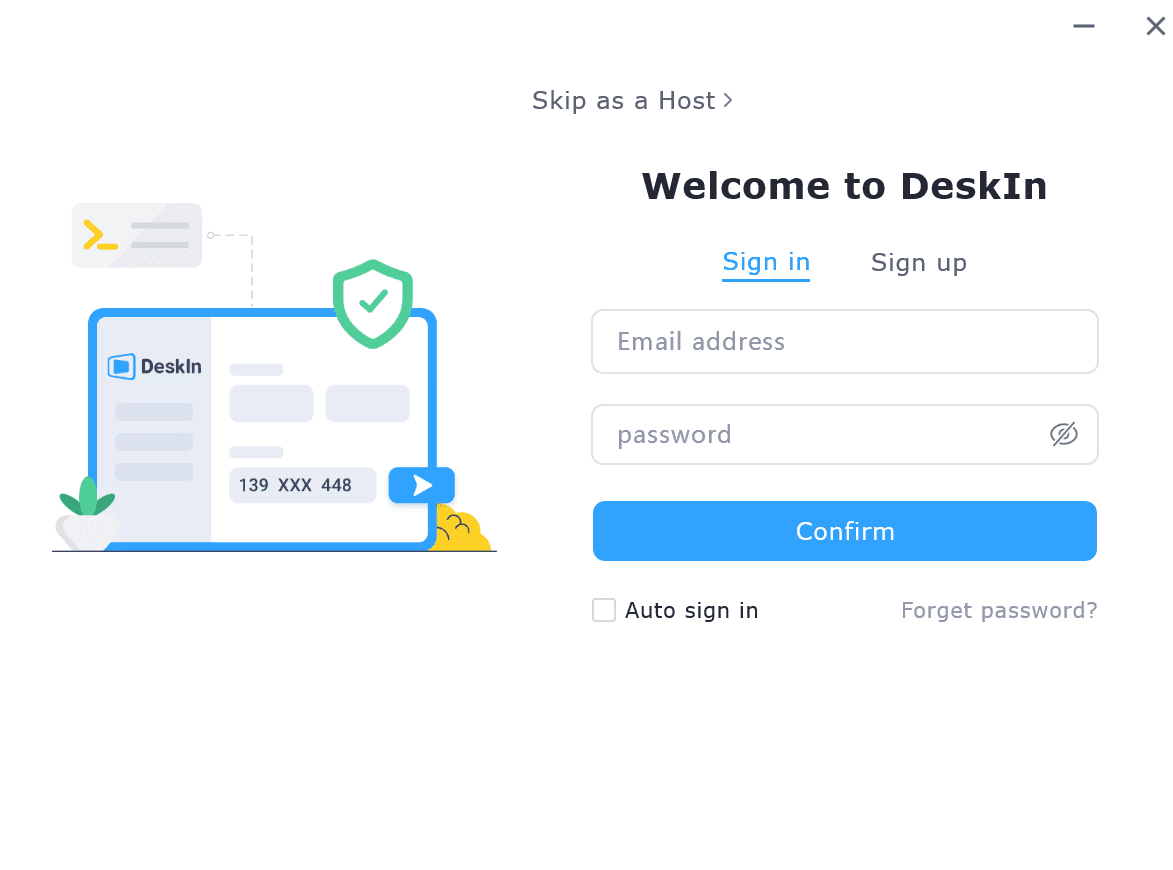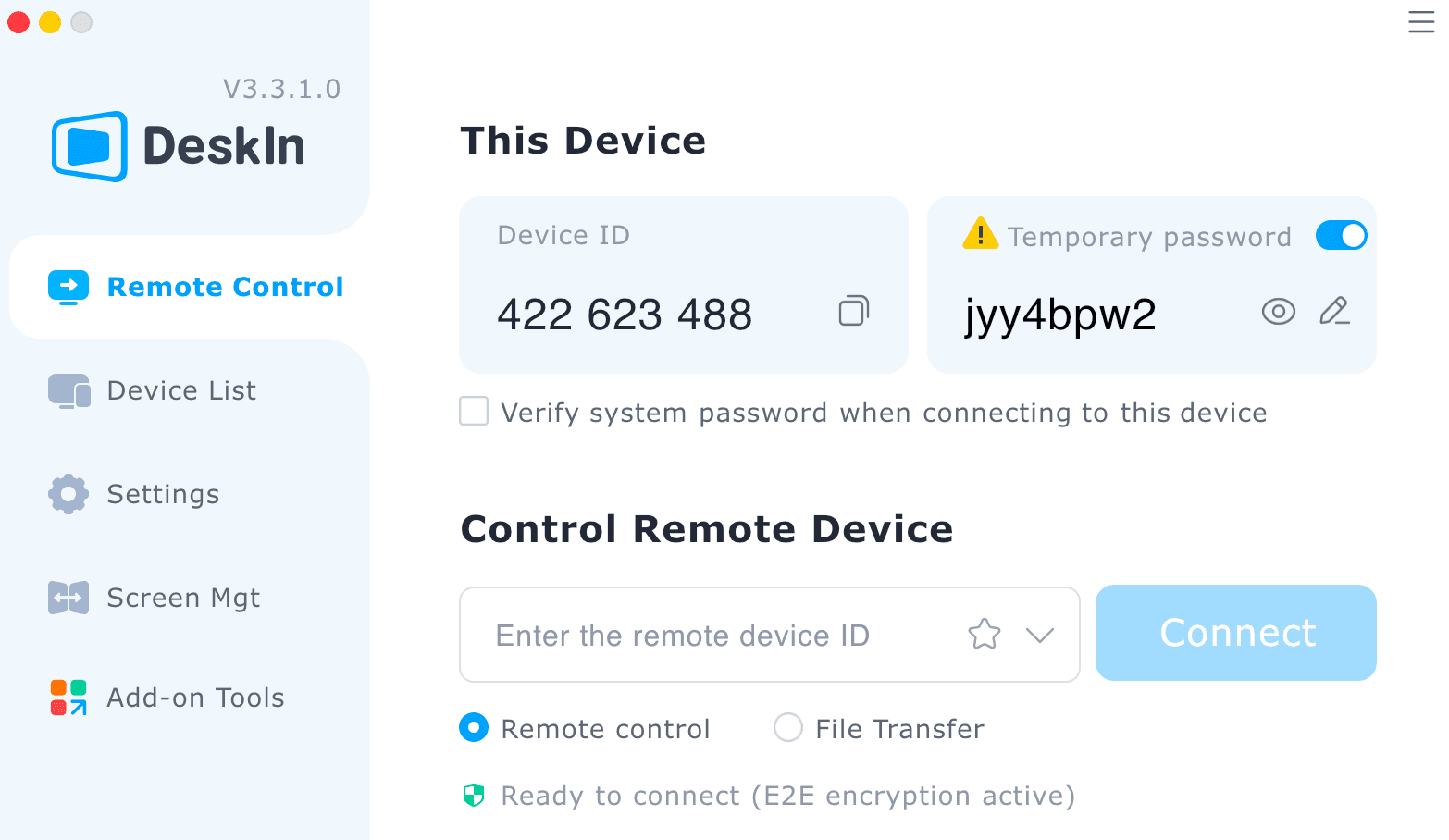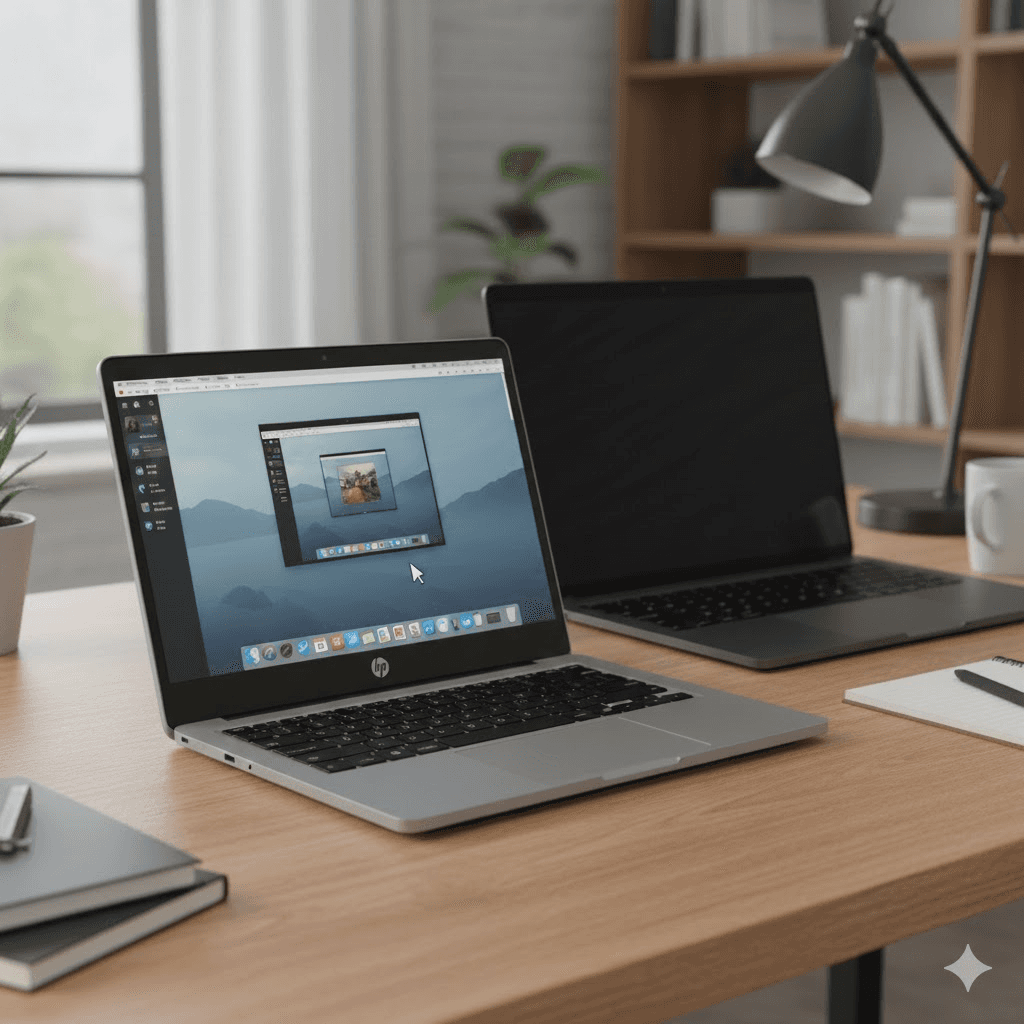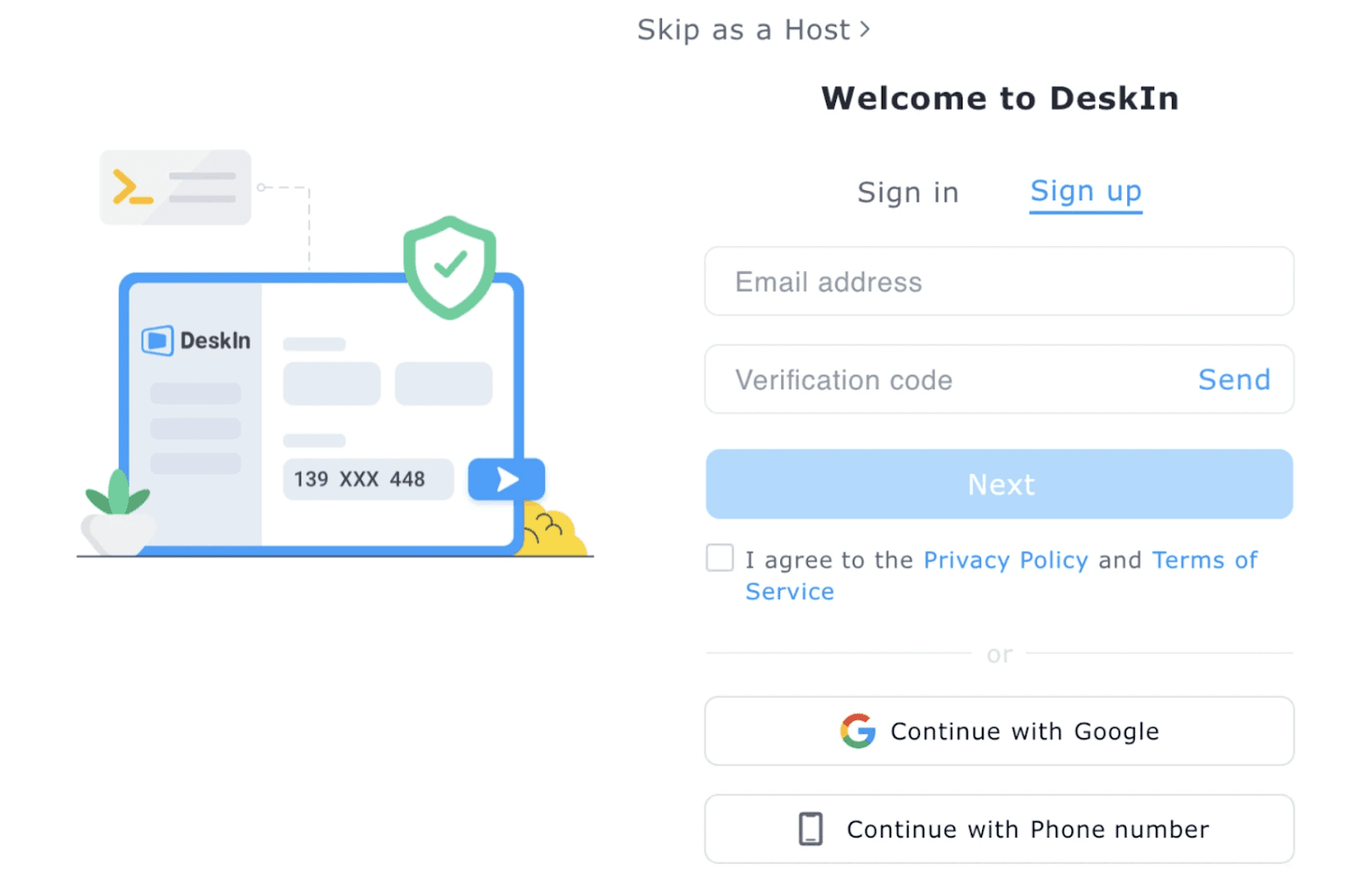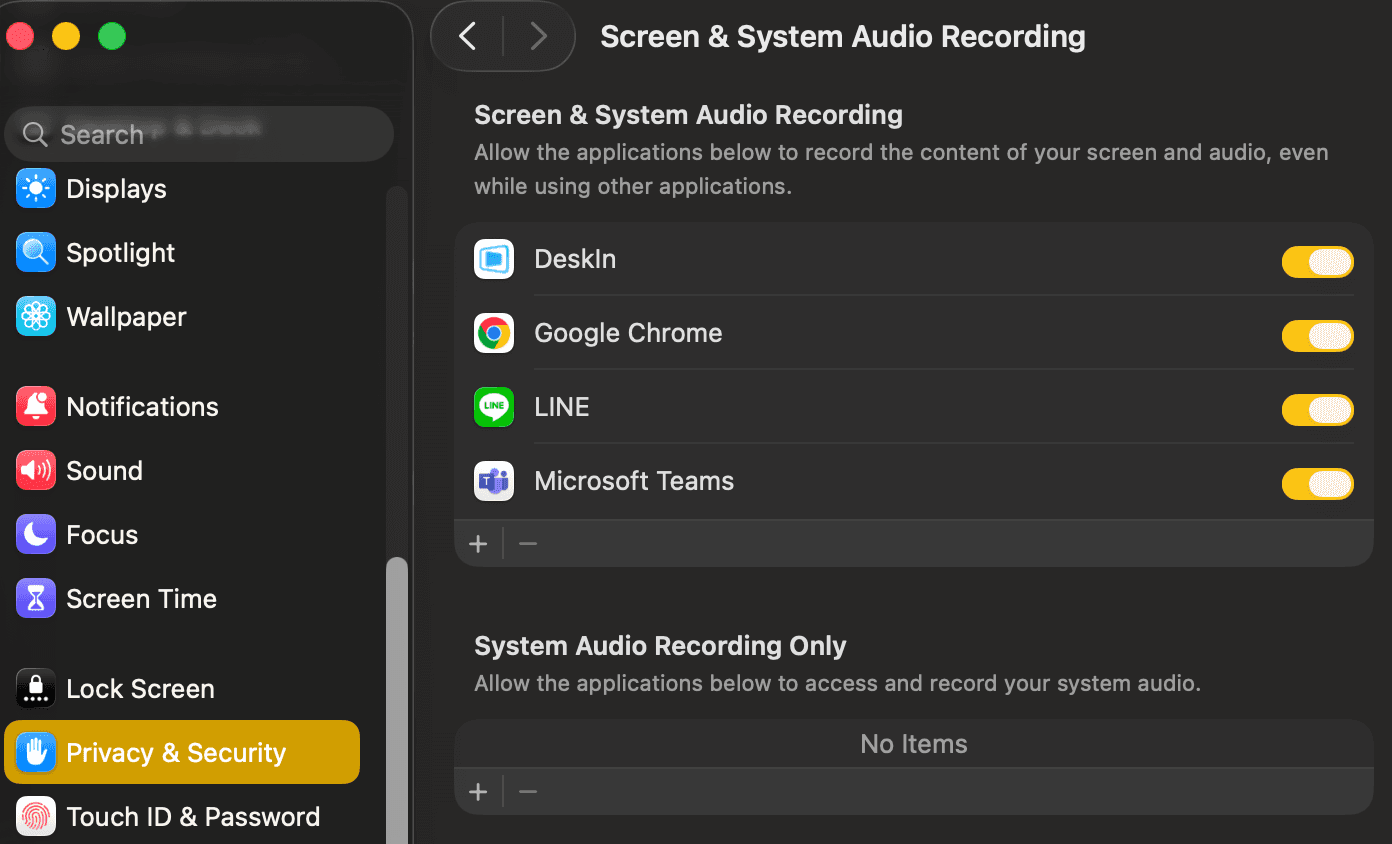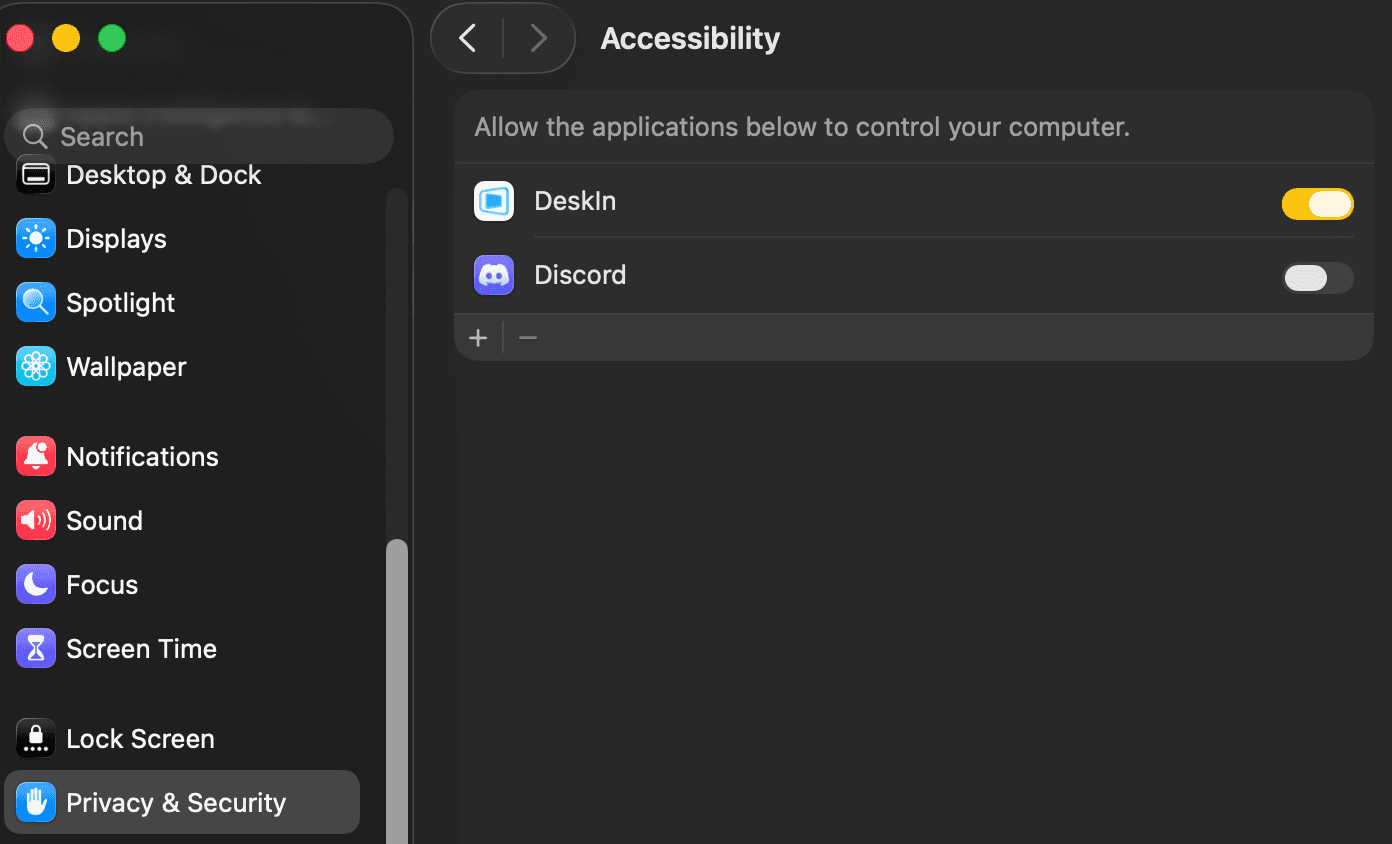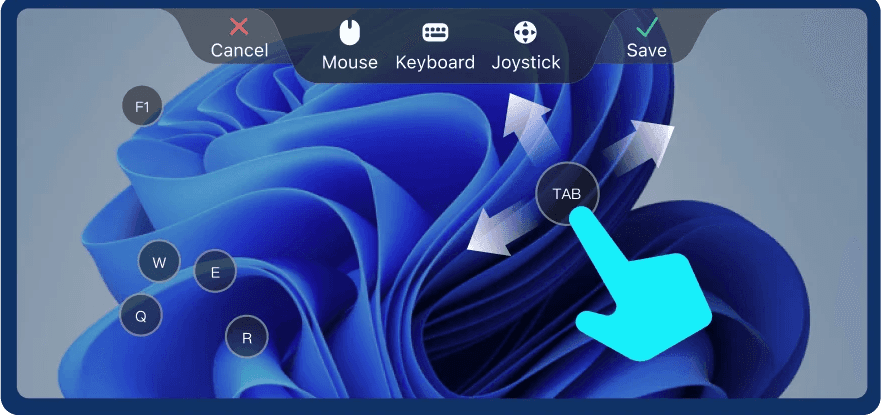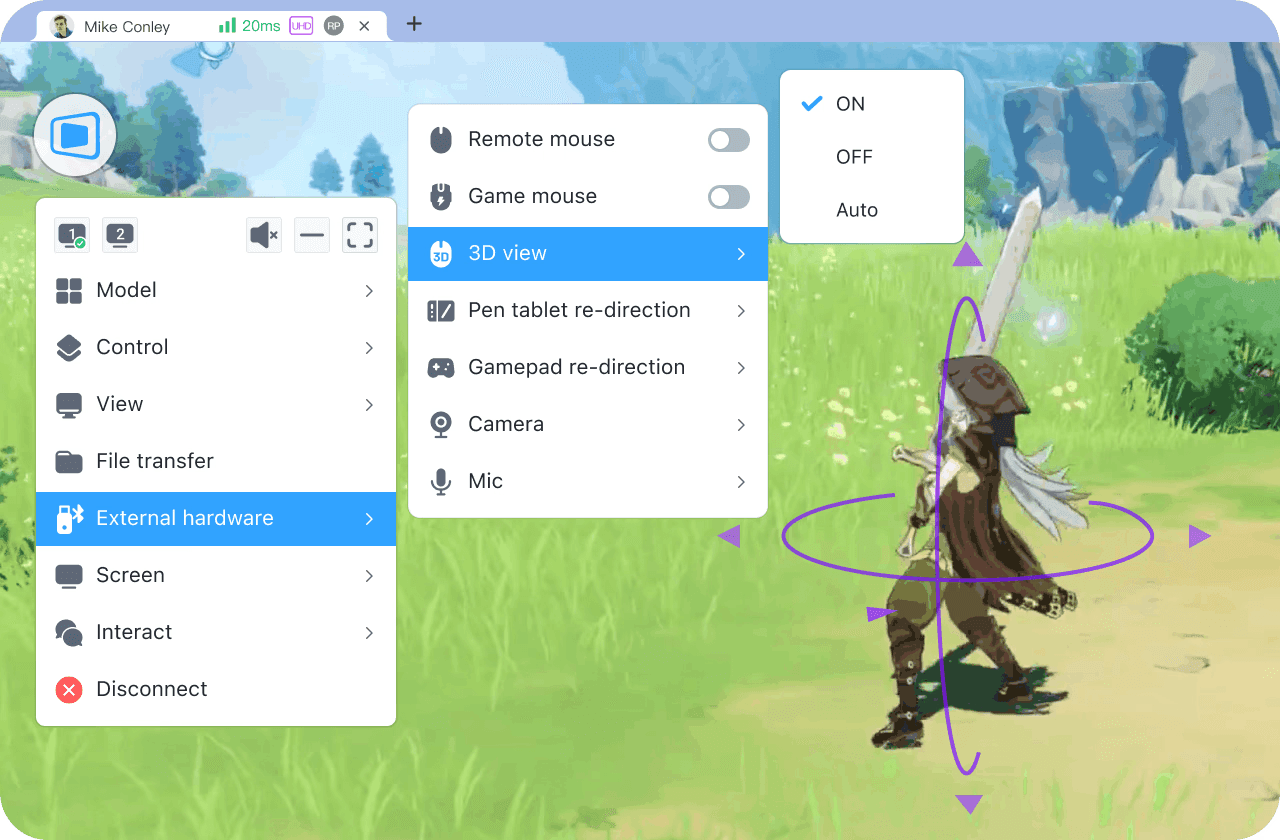Tired of juggling USB drives to share files between Mac and PC? If you own both a Mac and a Windows laptop, transferring large files across platforms can feel needlessly complex. While cloud services work, they're painfully slow for frequent transfers, especially when both devices are on the same network.
This ultimate guide unlocks 4 wireless methods to transfer big files between Mac and PC seamlessly. Whether you need to synchronize two computers with different systems at home (e.g., Mac and Windows) or need to transfer work files from your home Mac to your company Windows computer, we will show you how to get rid of cumbersome hardware dependency and achieve cross-platform, wireless speedy transfer in 1-2 minutes.
Learn to configure stable connections, avoid Wi-Fi bottlenecks, and maintain file integrity — all while keeping your workflow uninterrupted. Transform your cross-platform frustrations into one-click efficiency today!
You May Also Like:
3 Ways to Send Large Files that Exceed Email Size Limits Easily
How to Share Files between Windows and iPhone Wirelessly No Apps Required
Method 1. Wirelessly & Easily Transfer Large Files from Mac to Windows
Need to transfer files from Mac to Windows without cables or complex setups? DeskIn, a dedicated file transfer app for Mac, is designed for professionals who prioritize speed and security. It simplifies cross-platform workflows, whether you're syncing raw video edits or collaborating on sensitive contracts.
DeskIn simplifies sending files from Mac to Windows with unmatched ease. Whether sharing large folders or individual documents, its intuitive interface ensures instant cross-platform compatibility — no more wrestling with OS barriers or third-party converters. Transfer files directly between macOS and Windows devices as effortlessly as you would between two computers of the same OS.
Why Choose DeskIn for File Transferring from Mac to Windows
Works With All Types and All Sizes of Files: Transfer photos, documents, music, videos, and any other big files without problems. No more worrying if your files will work - everything transfers perfectly.
High-Speed Bulk Transfers: Move 10GB Files in 10 Minutes. Spend less time waiting and more time being productive when you need to send important work files quickly.
Military-Grade Security for Sensitive Files: The transfer of files will be encrypted to protect the security of your information. Designed for lawyers, HR teams, or startups dealing with NDA/financial data, DeskIn provides secure file transfers.
Easy Two-Way Sharing: Simply drag and drop files from Mac to Windows - no complicated setup is needed. DeskIn lets you transfer files as easily as moving files between folders on your own computer.
Cross-system remote desktop control: Remotely control another device in real-time with high-definition image quality and millisecond response, so that collaborative retouching, debugging code, or working on documents in an emergency can be done as if you were there.
How to Quickly Transfer Large Files from Mac to PC via DeskIn
Step 1. Download DeskIn
Visit DeskIn and install it on both devices. Create and log in to your account on both devices.
👉 Click here to download DeskIn

Step 2. Choose Remote Windows to Connect
Navigate to the Device List, find the target PC, click the File Transfer button, and enter the Password (in the Remote Control).
Note: You will also need to enter the device code if your two devices are not logged into the same account.

Step 3. Move Files from Mac to PC
Simply drag and drop files between Mac and Windows. At the bottom of the page, you can see the progress of the file transfer. After a successful transfer, you can see the transferred files in your folder.
With DeskIn, you can transfer files with unlimited size, type, and number from Mac to Windows wirelessly. Make use of its free version and transfer large files now!

Method 2. Transfer Files and Folders via SMB File Sharing on macOS
If you want to use the SMB feature that comes with your Mac to transfer big files wirelessly to Windows, you'll have to spend five minutes manually turning on file sharing, synchronizing the workgroup names of your Mac and Windows (which are different by default), and keeping a close eye on IP addresses that could change at any time. As soon as the router reboots or switches networks, you'll have to reset the router as soon as the IP changes.
What's more, you must create a dedicated account for Windows users and risk password security if you don't close the account after the transfer. It supports real-time editing, but frequent disconnections and complex folder mapping make it suitable only for techies with the patience to toss and turn. If you can live with the above drawbacks, I'll show you how to do it next.
How to Expertly Transfer Files and Folders via SMB File Sharing on macOS
Step 1: Enable SMB File Sharing on your Mac
Open System Settings: Click on the Apple icon on your Mac and select System Settings. Find General on the left sidebar and click Sharing (you may need to scroll down).

Turn On File Sharing: Click the Info button next to File Sharing and toggle the File Sharing switch to ON.
Configure SMB Protocol: Click Options and toggle on Share files and folders using SMB. Under Windows File Sharing, check the box next to the account name whose files you'll access on Windows. Enter the password for that user and click OK. Then click Done in the SMB File Sharing window.

Note Your Mac's IP Address: Return to the File Sharing menu and find the IP address under File Sharing: On (e.g., smb://192.168.X.X).
With file sharing now active on your Mac, seamlessly switch to your Windows PC to access the shared folders.
Step 2: Connect to Your Mac's Shared Folders
Open File Explorer: Press Win and E or click the folder icon in your taskbar.
Enter Mac's IP Address: In the address bar, type \\ followed by your Mac's IP (e.g., \\192.168.X.X.). Ignore any "smb:" prefixes.

Authenticate with Mac Credentials: When prompted, enter the exact username/password of the Mac account you enabled for sharing.
Step 3: Copy Files Like a Local Drive:
Navigate to the shared folder and drag and drop files between Mac and Windows.
Troubleshooting
Connection Failed?
Ensure both devices are on the same network and firewalls aren't blocking SMB (port 445). If your Mac's IP changes, repeat Step 1 to get the new IP.
Can't Edit Files?
Grant Read/write permissions to the Windows account in Mac's sharing settings (Step 1 > Options).
Method 3. Transfer Files from Mac to Windows via iCloud
iCloud Drive lets you wirelessly share files between Mac and Windows—perfect if you're already using Apple devices and need occasional cross-platform transfers for small documents, photos, or presentations. It's built into macOS, syncs automatically to iPhones/iPads, and works on Windows via the iCloud for Windows app.
But beware: the 5GB free storage fills fast (upgrades start at $0.99/month), the Windows app feels sluggish, and Apple-specific files (like .pages) require conversion. Privacy-minded users should note that Apple scans iCloud content for CSAM, raising concerns about sensitive data. Unlike cumbersome cloud services, file transfers over a remote desktop occur in real-time with drag-and-drop simplicity.
Limitations of Using iCloud for File Transferring
Storage Constraints: Only 5GB is shared across iCloud backups, photos, and Drive—insufficient for media-heavy users. Expanding storage requires a paid plan.
Windows Experience Limitations: The iCloud for Windows app is slower and less intuitive than macOS integration.
Collaboration Barriers: Windows users must manually download files via email or web links—no direct editing in iCloud.
No LAN Sync: Transfers rely entirely on internet upload/download speeds.
For Cloud services, we suggest 3 big ones, like Dropbox, Google Drive, and Microsoft OneDrive. But if you're an Apple loyalist sharing casual files, I'll show you exactly how to share documents between two computers by using iCloud Drive in the next steps—let's dive in!
How to Wirelessly Share Files Between A Mac and PC via iCloud
Step1. On Mac:
Enable iCloud Drive in System Settings and sign in with your Apple ID. Drag files to the iCloud Drive folder.

Step 2. On Windows:
Install iCloud for Windows and sign in with your Apple ID. Enable iCloud Drive and files sync automatically to iCloud Drive in File Explorer.

Method 4. Transfer Small Files by Email
Need to quickly transfer files between Mac and PC? Email offers a zero-setup solution for urgent swaps of PDFs, photos, or documents under 25 MB. Avoid it for sensitive data or HD media due to attachment limits and lack of encryption. Using Gmail as an example, I'll show you how to send small files from Mac to Windows via email.
Limitations
Max 25MB/file (varies by provider).
No bulk transfers — attach files individually.
Security risks: Email providers may scan attachments.
💻 Related Reading:
How to Transfer Small Files under 25MB via email
Step 1. On Mac:
Open Gmail, click New Message, and attach files using the link icon. Then send it to your Windows PC email. Remember to compress files into a ZIP archive to bypass size limits slightly when transferring large files between Mac and PC via email.

Step 2. On Windows:
Open your Gmail and download attachments. Save files to your Desktop or download them for easy access.

FAQs about Transfer files from Mac to Windows Wirelessly
Can I Airdrop from Mac to PC?
No, you can't Airdrop from Mac to PC. Airdrop only works within Apple's ecosystem. To transfer files from your Mac to a Windows PC, we recommend using a remote desktop tool like DeskIn. It offers fast wireless transfers – you can send a 10GB file in under 10 minutes, with no file size restrictions.
What Format Can Mac and PC Read?
Both Mac and PC can read exFAT and FAT32 formats natively.
exFAT is ideal for large files (over 4GB) and external drives.
FAT32 works universally but has a 4GB file limit.
NTFS is read-only on Mac by default; writing requires third-party tools.
For seamless cross-platform transfers, we recommend exFAT.
Conclusion
Whether you need to transfer files from Mac to Windows wirelessly for work, creativity, or casual use, the right method depends on your priorities: DeskIn is your go-to for large, sensitive files with military-grade encryption and drag-and-drop simplicity. Perfect for professionals who value speed and security.
iCloud Drive suits Apple loyalists sharing small documents or photos occasionally, but its 5GB free tier and clunky Windows integration frustrate power users. SMB File Sharing works for tech-savvy LAN transfers but demands patience for setup and network stability. Email remains a quick fix for sub-25MB files but lacks encryption and scalability.
For urgent large transfers, DeskIn outperforms clunky SMB File Sharing, cloud tools, and email. Start experimenting with DeskIn now!
Tired of juggling USB drives to share files between Mac and PC? If you own both a Mac and a Windows laptop, transferring large files across platforms can feel needlessly complex. While cloud services work, they're painfully slow for frequent transfers, especially when both devices are on the same network.
This ultimate guide unlocks 4 wireless methods to transfer big files between Mac and PC seamlessly. Whether you need to synchronize two computers with different systems at home (e.g., Mac and Windows) or need to transfer work files from your home Mac to your company Windows computer, we will show you how to get rid of cumbersome hardware dependency and achieve cross-platform, wireless speedy transfer in 1-2 minutes.
Learn to configure stable connections, avoid Wi-Fi bottlenecks, and maintain file integrity — all while keeping your workflow uninterrupted. Transform your cross-platform frustrations into one-click efficiency today!
You May Also Like:
3 Ways to Send Large Files that Exceed Email Size Limits Easily
How to Share Files between Windows and iPhone Wirelessly No Apps Required
Method 1. Wirelessly & Easily Transfer Large Files from Mac to Windows
Need to transfer files from Mac to Windows without cables or complex setups? DeskIn, a dedicated file transfer app for Mac, is designed for professionals who prioritize speed and security. It simplifies cross-platform workflows, whether you're syncing raw video edits or collaborating on sensitive contracts.
DeskIn simplifies sending files from Mac to Windows with unmatched ease. Whether sharing large folders or individual documents, its intuitive interface ensures instant cross-platform compatibility — no more wrestling with OS barriers or third-party converters. Transfer files directly between macOS and Windows devices as effortlessly as you would between two computers of the same OS.
Why Choose DeskIn for File Transferring from Mac to Windows
Works With All Types and All Sizes of Files: Transfer photos, documents, music, videos, and any other big files without problems. No more worrying if your files will work - everything transfers perfectly.
High-Speed Bulk Transfers: Move 10GB Files in 10 Minutes. Spend less time waiting and more time being productive when you need to send important work files quickly.
Military-Grade Security for Sensitive Files: The transfer of files will be encrypted to protect the security of your information. Designed for lawyers, HR teams, or startups dealing with NDA/financial data, DeskIn provides secure file transfers.
Easy Two-Way Sharing: Simply drag and drop files from Mac to Windows - no complicated setup is needed. DeskIn lets you transfer files as easily as moving files between folders on your own computer.
Cross-system remote desktop control: Remotely control another device in real-time with high-definition image quality and millisecond response, so that collaborative retouching, debugging code, or working on documents in an emergency can be done as if you were there.
How to Quickly Transfer Large Files from Mac to PC via DeskIn
Step 1. Download DeskIn
Visit DeskIn and install it on both devices. Create and log in to your account on both devices.
👉 Click here to download DeskIn

Step 2. Choose Remote Windows to Connect
Navigate to the Device List, find the target PC, click the File Transfer button, and enter the Password (in the Remote Control).
Note: You will also need to enter the device code if your two devices are not logged into the same account.

Step 3. Move Files from Mac to PC
Simply drag and drop files between Mac and Windows. At the bottom of the page, you can see the progress of the file transfer. After a successful transfer, you can see the transferred files in your folder.
With DeskIn, you can transfer files with unlimited size, type, and number from Mac to Windows wirelessly. Make use of its free version and transfer large files now!

Method 2. Transfer Files and Folders via SMB File Sharing on macOS
If you want to use the SMB feature that comes with your Mac to transfer big files wirelessly to Windows, you'll have to spend five minutes manually turning on file sharing, synchronizing the workgroup names of your Mac and Windows (which are different by default), and keeping a close eye on IP addresses that could change at any time. As soon as the router reboots or switches networks, you'll have to reset the router as soon as the IP changes.
What's more, you must create a dedicated account for Windows users and risk password security if you don't close the account after the transfer. It supports real-time editing, but frequent disconnections and complex folder mapping make it suitable only for techies with the patience to toss and turn. If you can live with the above drawbacks, I'll show you how to do it next.
How to Expertly Transfer Files and Folders via SMB File Sharing on macOS
Step 1: Enable SMB File Sharing on your Mac
Open System Settings: Click on the Apple icon on your Mac and select System Settings. Find General on the left sidebar and click Sharing (you may need to scroll down).

Turn On File Sharing: Click the Info button next to File Sharing and toggle the File Sharing switch to ON.
Configure SMB Protocol: Click Options and toggle on Share files and folders using SMB. Under Windows File Sharing, check the box next to the account name whose files you'll access on Windows. Enter the password for that user and click OK. Then click Done in the SMB File Sharing window.

Note Your Mac's IP Address: Return to the File Sharing menu and find the IP address under File Sharing: On (e.g., smb://192.168.X.X).
With file sharing now active on your Mac, seamlessly switch to your Windows PC to access the shared folders.
Step 2: Connect to Your Mac's Shared Folders
Open File Explorer: Press Win and E or click the folder icon in your taskbar.
Enter Mac's IP Address: In the address bar, type \\ followed by your Mac's IP (e.g., \\192.168.X.X.). Ignore any "smb:" prefixes.

Authenticate with Mac Credentials: When prompted, enter the exact username/password of the Mac account you enabled for sharing.
Step 3: Copy Files Like a Local Drive:
Navigate to the shared folder and drag and drop files between Mac and Windows.
Troubleshooting
Connection Failed?
Ensure both devices are on the same network and firewalls aren't blocking SMB (port 445). If your Mac's IP changes, repeat Step 1 to get the new IP.
Can't Edit Files?
Grant Read/write permissions to the Windows account in Mac's sharing settings (Step 1 > Options).
Method 3. Transfer Files from Mac to Windows via iCloud
iCloud Drive lets you wirelessly share files between Mac and Windows—perfect if you're already using Apple devices and need occasional cross-platform transfers for small documents, photos, or presentations. It's built into macOS, syncs automatically to iPhones/iPads, and works on Windows via the iCloud for Windows app.
But beware: the 5GB free storage fills fast (upgrades start at $0.99/month), the Windows app feels sluggish, and Apple-specific files (like .pages) require conversion. Privacy-minded users should note that Apple scans iCloud content for CSAM, raising concerns about sensitive data. Unlike cumbersome cloud services, file transfers over a remote desktop occur in real-time with drag-and-drop simplicity.
Limitations of Using iCloud for File Transferring
Storage Constraints: Only 5GB is shared across iCloud backups, photos, and Drive—insufficient for media-heavy users. Expanding storage requires a paid plan.
Windows Experience Limitations: The iCloud for Windows app is slower and less intuitive than macOS integration.
Collaboration Barriers: Windows users must manually download files via email or web links—no direct editing in iCloud.
No LAN Sync: Transfers rely entirely on internet upload/download speeds.
For Cloud services, we suggest 3 big ones, like Dropbox, Google Drive, and Microsoft OneDrive. But if you're an Apple loyalist sharing casual files, I'll show you exactly how to share documents between two computers by using iCloud Drive in the next steps—let's dive in!
How to Wirelessly Share Files Between A Mac and PC via iCloud
Step1. On Mac:
Enable iCloud Drive in System Settings and sign in with your Apple ID. Drag files to the iCloud Drive folder.

Step 2. On Windows:
Install iCloud for Windows and sign in with your Apple ID. Enable iCloud Drive and files sync automatically to iCloud Drive in File Explorer.

Method 4. Transfer Small Files by Email
Need to quickly transfer files between Mac and PC? Email offers a zero-setup solution for urgent swaps of PDFs, photos, or documents under 25 MB. Avoid it for sensitive data or HD media due to attachment limits and lack of encryption. Using Gmail as an example, I'll show you how to send small files from Mac to Windows via email.
Limitations
Max 25MB/file (varies by provider).
No bulk transfers — attach files individually.
Security risks: Email providers may scan attachments.
💻 Related Reading:
How to Transfer Small Files under 25MB via email
Step 1. On Mac:
Open Gmail, click New Message, and attach files using the link icon. Then send it to your Windows PC email. Remember to compress files into a ZIP archive to bypass size limits slightly when transferring large files between Mac and PC via email.

Step 2. On Windows:
Open your Gmail and download attachments. Save files to your Desktop or download them for easy access.

FAQs about Transfer files from Mac to Windows Wirelessly
Can I Airdrop from Mac to PC?
No, you can't Airdrop from Mac to PC. Airdrop only works within Apple's ecosystem. To transfer files from your Mac to a Windows PC, we recommend using a remote desktop tool like DeskIn. It offers fast wireless transfers – you can send a 10GB file in under 10 minutes, with no file size restrictions.
What Format Can Mac and PC Read?
Both Mac and PC can read exFAT and FAT32 formats natively.
exFAT is ideal for large files (over 4GB) and external drives.
FAT32 works universally but has a 4GB file limit.
NTFS is read-only on Mac by default; writing requires third-party tools.
For seamless cross-platform transfers, we recommend exFAT.
Conclusion
Whether you need to transfer files from Mac to Windows wirelessly for work, creativity, or casual use, the right method depends on your priorities: DeskIn is your go-to for large, sensitive files with military-grade encryption and drag-and-drop simplicity. Perfect for professionals who value speed and security.
iCloud Drive suits Apple loyalists sharing small documents or photos occasionally, but its 5GB free tier and clunky Windows integration frustrate power users. SMB File Sharing works for tech-savvy LAN transfers but demands patience for setup and network stability. Email remains a quick fix for sub-25MB files but lacks encryption and scalability.
For urgent large transfers, DeskIn outperforms clunky SMB File Sharing, cloud tools, and email. Start experimenting with DeskIn now!







